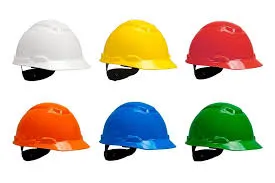water jetting safety clothing
Water Jetting Safety Clothing Ensuring Protection in High-Pressure Environments
Water jetting is a powerful technique commonly used in industrial cleaning, surface preparation, and demolition. With its ability to cut through hard materials, remove contaminants, and clean surfaces effectively, high-pressure water jetting is invaluable across various sectors, including construction, manufacturing, and marine services. However, the use of high-pressure water jets poses significant risks, making the choice of appropriate safety clothing essential for protecting workers in such environments.
The Importance of Safety Clothing
Workers involved in water jetting operations are exposed to various hazards, including high-pressure water jets, flying debris, and potential chemical exposure from cleaning agents. Safety clothing is designed to mitigate these risks and ensure that workers can perform their tasks safely and effectively. The right safety gear can prevent injuries, reduce downtime, and contribute to a culture of safety within the workplace.
Key Components of Water Jetting Safety Clothing
1. Protective Suits One of the most critical elements of safety clothing for water jetting is the protective suit. These suits are usually made from heavy-duty, waterproof materials that can withstand the force of high-pressure water, as well as resist abrasions from debris. Suits should fit properly to prevent water from entering while still allowing for freedom of movement.
2. Face Shields and Goggles The face is particularly vulnerable during water jetting operations. Face shields and goggles are essential to protect against water jets and flying particles, which can cause serious eye injuries. It’s crucial that protective eyewear meets industry standards for impact resistance and provides a snug fit.
3. Gloves Water jetting can involve the handling of both high-pressure water and toxic chemicals. High-quality gloves should be used to protect the hands from cuts, abrasions, and chemical exposure. Gloves should offer a good grip even when wet and should not impair the worker's dexterity.
4. Foot Protection Safety footwear is also vital. Industrial-grade, waterproof boots with slip-resistant soles can prevent falls and protect against potential puncture wounds from debris on the ground. Steel-toed variants can provide additional protection against heavy objects and are beneficial in creating a safe working environment.
water jetting safety clothing

5. Ear Protection Water jetting can generate significant noise levels, particularly when operating heavy machinery. Prolonged exposure can lead to hearing damage. Hence, workers should wear ear protection, such as earmuffs or earplugs, to minimize the risk of hearing loss.
6. High Visibility Clothing In many work zones, especially those that involve other machinery or vehicles, visibility is crucial. High-visibility vests or outer layers ensure that workers can be easily seen, reducing the risk of accidents.
Compliance with Regulations
Safety clothing for water jetting is not only essential for the well-being of workers, but it is also governed by strict regulatory standards. Various health and safety agencies provide guidelines detailing the minimum requirements for personal protective equipment (PPE). Employers need to ensure that their workers are equipped with clothing that complies with these regulations, regularly inspecting and maintaining safety gear to keep it in proper working order.
Training and Awareness
Employers should conduct regular training sessions to educate employees about the importance of wearing appropriate safety clothing. Beyond just donning the gear, workers need to understand the reasoning behind the equipment and how it protects them from specific hazards. Cultivating a culture of safety awareness encourages employees to take ownership of their personal protection and reinforces the importance of following safety protocols.
Conclusion
In conclusion, water jetting is an efficient but hazardous practice, necessitating the use of suitable safety clothing to safeguard workers. Protective suits, eyewear, gloves, footwear, ear protection, and high-visibility clothing all play vital roles in ensuring safety during operations. Compliance with regulations and ongoing training are integral to a robust safety culture in the workplace. By prioritizing the right safety clothing, companies can protect their workforce, reduce the risk of injuries, and promote a safe and efficient working environment. Investing in high-quality safety clothing not only ensures compliance but also demonstrates a commitment to the health and welfare of employees, ultimately benefiting the organization as a whole.
-
Aero Safety Helmet - OEM Gomax Aero Adult Safety Helmet, Affordable Protection for Cyclists
NewsJun.10,2025
-
Buy uvex pheos abs alpine safety helmet – OEM & Cheap Options from China Supplier
NewsJun.10,2025
-
Volman Safety Helmet - Premium Durable Protection for Industrial Workers
NewsJun.10,2025
-
Top Safety Helmet Suppliers in UAE Reliable Brands & Affordability
NewsJun.10,2025
-
Affordable Safety Helmet with Visor & Earmuffs - OEM China Supply
NewsJun.10,2025
-
Affordable Safety Clothing in Deer Park, TX Cheap & OEM Options
NewsJun.09,2025
